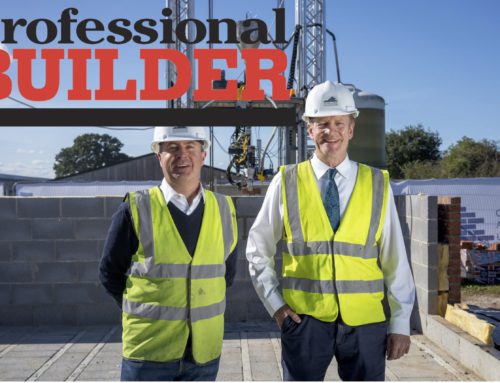Tech entrepreneurs are building test properties ahead of commercial production
By David Laister, Business Editor (Humber)
An East Yorkshire company is laying the foundations to revolutionise the housebuilding industry – by creating the UK’s first home built by a robot
Pocklington-based Construction Automation started work on the three-bedroom house in Everingham this week, a modern property being built from traditional bricks and mortar.
But there is nothing traditional about the way the walls are being constructed.
Instead of bricklayers and labourers, the house is being built by Construction Automation’s Automatic Brick Laying Robot (ABLR) – an innovative piece of technology that has been four years in development.
In a world first, the robot will lay all the bricks, blocks, and mortar. It is also the first machine of its type ever created that can build around corners – meaning it can construct an entire house without stopping.
Construction Automation was formed in May 2016 by entrepreneurs David Longbottom and Stuart Parkes, building on work the latter had done in nuclear construction and subsea pipe laying.

Stuart Parkes and David Longbottom, directors of Construction Automation, on site in Everingham where their Automatic Brick Laying Robot is building the UK’s first ever robot-built house. (Image: TPRC)
David said: “The house will contain around 10,000 bricks and will take the ABLR about two weeks to build.
“It is the first house in the UK to be built by a robot, and possibly the first in the world.
“The ABLR comprises of the robot and a sophisticated software control system that reads digitised versions of architect’s plans. This instructs the robot exactly where to lay the blocks, bricks and mortar.
“It is controlled from a tablet and all the data about a specific build can be accessed remotely, making it very easy to assess progress on site at any time.”
Building in this way requires just two people to work on each house – a labourer to load bricks and mortar into the robot and a skilled person to install tie bars, damp courses, and lintels, and to do the pointing.

Construction Automation’s Automatic Brick Laying Robot at work. (Image: TPRC)
The control system sends out alerts when these stages are reached, and then takes a photograph of the completed task to form a complete digital record.
Stuart said the advantages of the ABLR include increased productivity, better quality houses, and improved health and safety on site.
He said: “Although bricks are meant to be a standard size there is quite a lot of variation in them.
“So, we use sensors to measure each individual brick and then to line it up, so it is precisely central on the wall. The sensors also align the edge of each brick to produce a perfect finish.
“That way, the ABLR builds quickly and to a consistently high standard.”
He added that as it sits on a nine-metre high vertical lift frame, it removes the need for scaffolding and for people to work at height.
“The robot is mounted on a track that is placed around the footprint of the house,” he said.
“With the in-built vertical lift, the machine can build easily to the height of a standard two-storey house, so it is much safer than building in the traditional way.”

Construction Automation’s Automatic Brick Laying Robot works from a track laid around the site and features mortar pump, sensors, and brick storage as well as the precision brick positioning. (Image: TPRC)
Construction Automation has already secured patent in the USA on the technology, and a European and UK patent is expected to follow shortly.
David added that once the ABLR had completed this house and a number of other test properties, the company will be ready to go into full production.
“Our goal is to automate housebuilding as far as we can,” he said.
“By doing this, we can increase productivity for the industry, improve health and safety, and guarantee quality.”
A farm manager will benefit from the first build.






